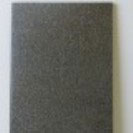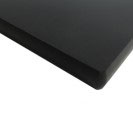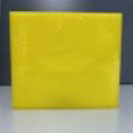Aquaculture
Aquaculture is essentially farming that happens in a water environment — it's how we breed, rear and harvest aquatic organisms like fish, algae, shellfish and more. Plastic, and in particular HDPE, plays a crucial role in the success of aquaculture initiatives. For example, on salmon farms, HDPE tubes and rings form the pens where the salmon are housed. These circular plastic cages are modular, so their size and position can be altered depending on the needs of the fish or the farm.
Additionally, plastic and other synthetic materials are used to make nets for catching fish, protecting them from predators and allowing them greater flexibility to move around in their environment. In fact, the cages themselves will likely someday be made from this synthetic blend of water plastics, rather than the more rigid solutions being employed today.
Irrigation Systems
The components that make up an irrigation system are broadly defined, ranging from canals and aqueducts that redirect water from surrounding freshwater sources to the sprinklers in a farmer's fields — essentially, any man-made means of delivering water to crops. You obviously won't find too much plastic in the architecture of a canal, but the network of pipes, sprinklers and other systems used to irrigate individual farms have plenty. Many of the key components, like pivot bushings, bearings and sprinkler nozzles, are all made of water plastics to keep equipment from breaking down too quickly due to water damage.
Plumbing Pipes & Pipe Fittings
In water reclamation, irrigation and even in your own home, plastic piping is more common than ever before. ABS, HDPE and PVC are the most abundantly used plastics for hot and cold water applications, helping transfer fresh, clean water to our kitchens, bathrooms and laundry rooms while removing gray water and sewage through separate systems. Plastic is easy to cut and form into a variety of shapes and sizes, even onsite, which greatly reduces the amount of time and effort needed for installation.
Potable Water Systems
Potable water is another term for drinking water, so the water systems that support it are held to very high standards. Water plastics are corrosion resistant, which helps limit contaminants while the water is in transit. They are also non-reactive and, in some cases, antimicrobial. All of these factors combine to create an ideal environment for transferring and purifying water that is safe to drink, cook with, bathe in and much more.
Water & Sewage Treatment Components
Treating black and gray water is a tough job that water reclamation plants employ plastic to help out with. In these plants, plastic is used for chain guides, paddles, sprockets, wear shoes and many other components needed to keep the entire treatment system moving. The lightweight, durable, corrosion-resistant characteristics of plastic make it so ideal for the job.
Learn More About Water Reclamation Plastics
There are plenty of other uses for water reclamation plastics than what we've covered here. So, no matter your application, there's a significant chance that water plastics will be the right material to get your job done. Questions? Contact A&C Plastics today to learn more or get started on a custom quote.
Contact Us





